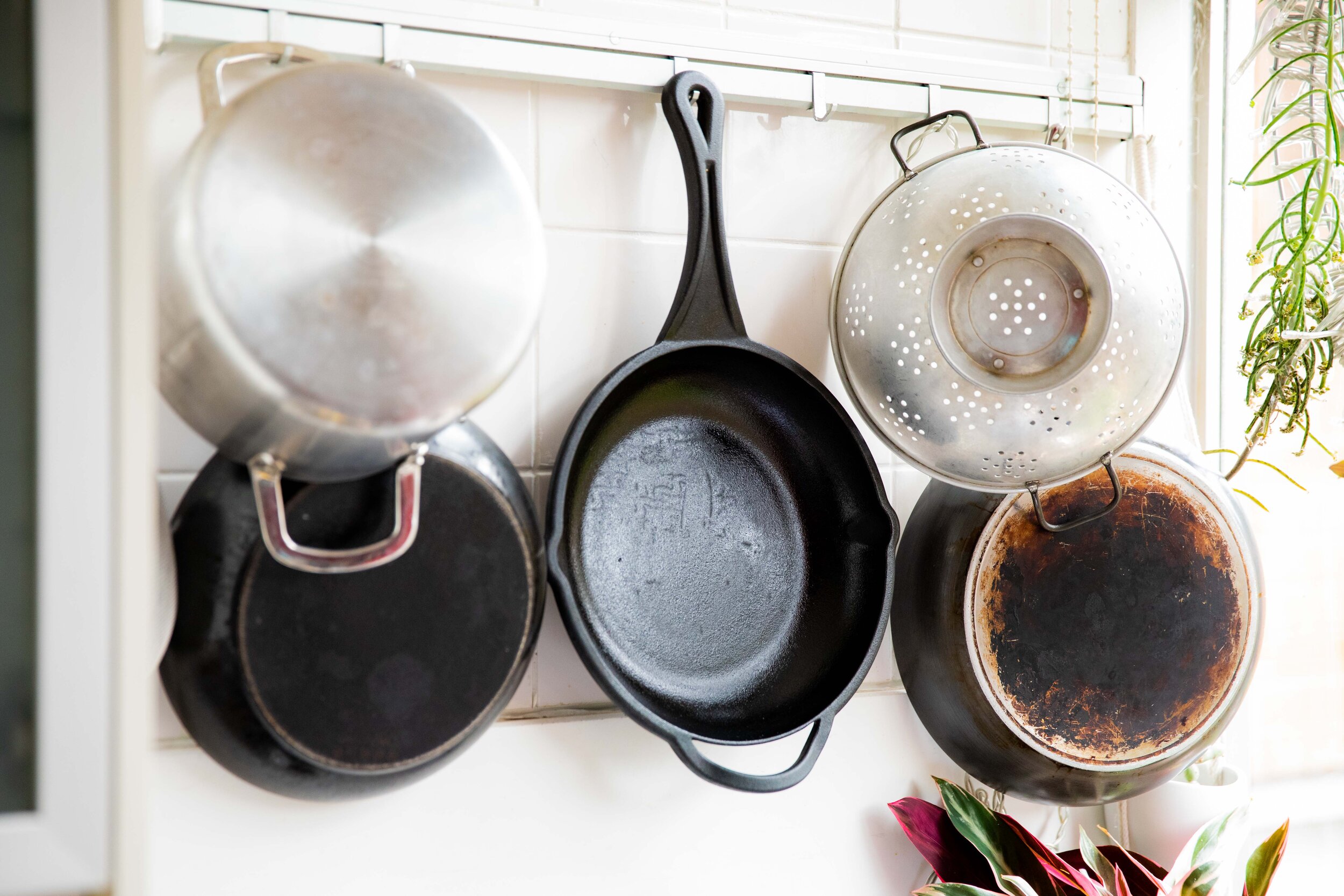WHEN ‘WELL SEASONED’ ISN’T JUST ABOUT TASTE
Generally when we’re talking about well seasoned in relation to food, we’re thinking about taste: does it hit that sweet spot when we eat it? And I’m not just talking the sweet taste here but also saltiness, bitterness, sourness etc. — all the way through the six Tastes that should be present in a meal for it to be satisfying. Ayurveda recognises that the body understands and uses these 6 Tastes in order to diagnose and take care of our mind-bodies.
But did you know “well seasoned” is also a term for describing the efficacy of a good old-fashioned piece of cast iron, stainless steel or carbon steel cookware? Metals rust quickly with exposure to heat, oxygen and the physical elements in food, so pans need protecting. Then there is also the issue of food adhering to the cookware — we’ve all been there with fried eggs getting stuck to the bottom of a frying pan!
When we “season” a pan, we not only protect the pan from rust and degrading but we also create a natural non-stick effect. This is the traditional and in my opinion preferable way of working with cookware for best health for us and our planet — seasoning involves treating the surface of a pan with heated fat to make it naturally corrosion-resistant and non-stick, and it is a method that has been used for generations.
Modern advances with cookware have brought us Teflon-coated pans and the like — a eureka moment in easy cooking but maybe not for our health... The lacquered layer is a chemical mixture which means that food slides about and in and off the pan easily and washing up is a doddle. Although they can be relatively safe to use at low and medium temperatures, bung them on high heat and they release toxic chemicals — not exactly reassuring, is it? Then there is the matter of damaging the surface: too high a heat, deep scratches from utensils or overscrubbing the pan and that lining starts to degrade into your food. Yuck. Recently there have been “greener options” on the market that don’t suffer a chemical coating that we want to avoid, and I definitely find a “green” non-toxic pan useful for said fried eggs, but for everything else I’m definitely sticking to traditional...
So back to the old-fashioned way: in order to season a pan, start by scrubbing it well with soap to lift off the manufacturer's coating. Once dry, coat it thinly with the oil of your choice (vegetable oil works well). Then place it upside down in the oven at 190°C for an hour, making sure to have something underneath it to catch the excess oil. Ta-da, a seasoned pan! Then when you need to wash it, you can just rinse under hot water and wipe dry — magic. If some bits are stuck to it, just pour a little hot water into it and leave it for a bit. OR if you’re dealing with some really burnt on stuck cooking then simmer with hot water for 10 minutes and then use a wooden spatula to lift it off.
Well seasoned is to me when you have a great relationship with your pan, the pan is nicely sealed and the food cooks beautifully and lifts off evenly without tonnes of added cooking fat necessary, and all it takes is hot water and a wipe and you’re ready to go again. You’ll recognise well seasoned pots and pans as having something magic about them — the old-fashioned cookware that feels like it’s got many recipes to tell, a bit like a good old wooden chopping board and it will be passed down through generations . A seasoned pan is lovely and shiny — if food does start to stick to it again, you should season it again.
This isn’t something that hotels and restaurants are likely doing these days — any kind of equipment that can’t be sterilised within an inch of its life is a no-no, so bye bye clay pots, etc. and instead I see a lot of Teflon-lined pans, which are totally scuffed, and I imagine most of the lining in yours or someone else's meal. Ick.
If you do use a Teflon-coated or other coated pan (even one with a non-toxic coating), you should never use a metal utensils as their scratchy nature (no matter how careful you are) causes corrosion, and once that surface is scratched the protective lining quickly degrades, leaving you with not only a non-working non-stick shabby looking pan but also exposure to the chemicals within the lining and under it. Instead, use wooden or silicone utensils to cook. I recommend checking any non-stick pans now and if the lining looks suspicious then dispose of the pan (not something I say lightly!). Invest in a good cast iron pan, season it well and be prepared to love it for a lifetime and pass it on to younger generations just as previous generations have done. A well looked after cast iron, stainless steel or carbon steel pan isn’t going anywhere! And though we talk more about pans here, which is usually the cookware people opt for in non-stick for frying purposes the same advice goes for your pots, oven trays and bakeware (use baking paper liners) too. So, when it comes to cookware, if you haven’t already inherited an heirloom, go ahead and make one!

